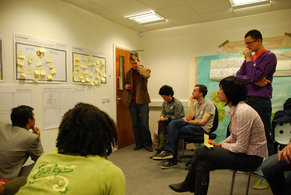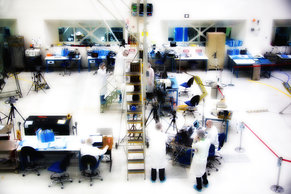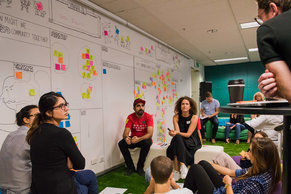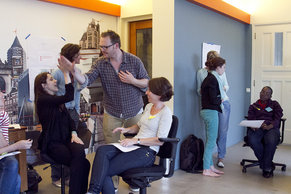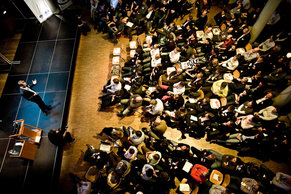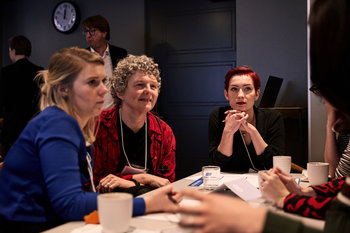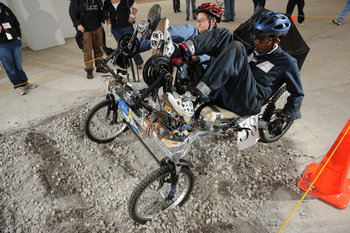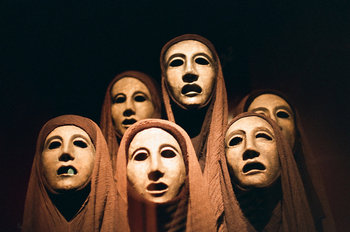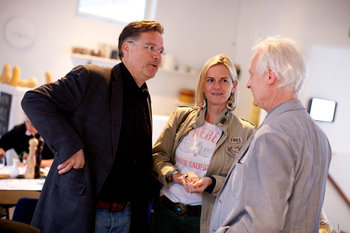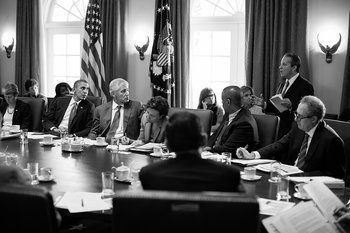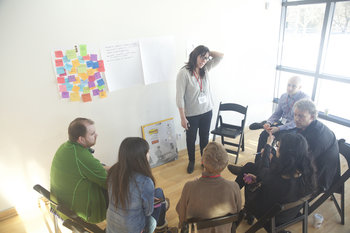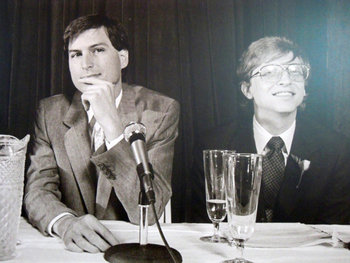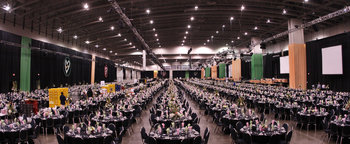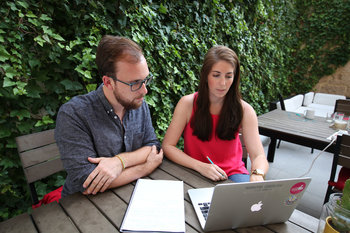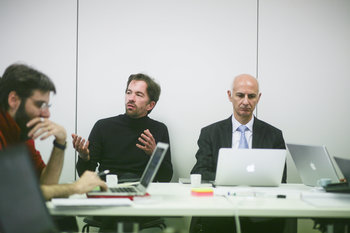
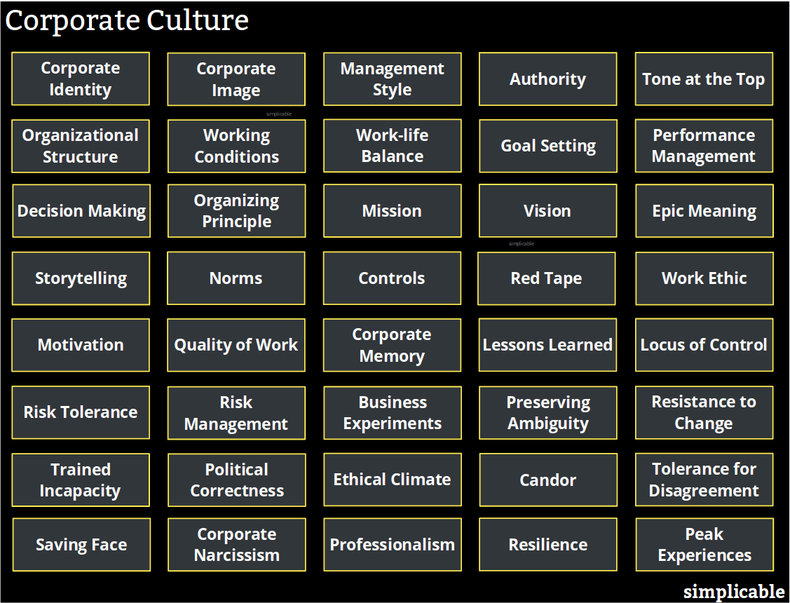
Corporate Identity
The identity of a firm as defined and promoted by management using tools such as branding, promotion and public relations.Corporate Image
The identity of a firm as it is actually perceived by stakeholders including employees. For example, if a firm presents itself as being environmentally responsible, insiders may view this as greenwashing if it doesn't reflect operational realities.Management Style
The style of leadership and management that prevails at a firm such as command and control or creative leadership.Authority
The distribution of authority within a firm. For example, a hierarchy with authority concentrated in the hands of a few individuals or a flat organization with authority distributed to many individuals.Tone at the Top
The ethics, values and behavior of senior management. This tends to be reverberate throughout a firm. For example, if senior management spend money recklessly the entire organization may exhibit poor cost control.Organizational Structure
The structure of departments and teams. For example, an organization with sales reporting to marketing versus an organization where sales and marketing are at the same level in the org chart. This may have a large impact on norms and expectations in the sales team.Working Conditions
The working conditions at the firm such as hygiene factors, remuneration and work schedule.Work-life Balance
Employees who feel that work compliments their lifestyle as opposed to consuming their time to the point that they are putting life on hold.Goal Setting
The process of developing and agreeing to goals and objectives. For example, a firm where employees have significant influence over their objectives as opposed to a firm where objectives are completely nonnegotiable.Performance Management
The process of monitoring performance, communicating feedback, rewarding performance and managing performance issues. For example, a firm where employees immediately receive feedback when they are off-track as opposed to team that suddenly informs an employee their performance has been low for six months.Decision Making
Norms of decision making such as a process of consensus building versus decisions driven by a talented leader.Organizing Principle
Principles, standards and policies that are used to guide strategy and decision making.Mission
A shared mission that describes what you're trying to achieve.Vision
A shared vision of the future. For example, a firm that sees a future where transportation infrastructure is far more more efficient, safe, fast and environmentally responsible.Epic Meaning
The degree to which employees and other stakeholders buy in to your mission and vision and feel that they are part of something big and meaningful.Storytelling
The history of your firm that survives as lively stories that employees actively share.Norms
Unspoken rules of behavior that exist within a team. For example, a safety culture where everyone is expected to err on the side of caution.Controls
Internal controls can have an impact on your culture. For example, a culture of trusting your employees versus controls that monitor their every move.Red Tape
Imposing administrative burdens on employees tends to reduce job satisfaction.Work Ethic
Expectations for effort and hours of work.Motivation
The reason that employees show up to work in the morning. For example, a team where everyone is passionate about their work versus a team where employees are only motivated to avoid being dismissed.Quality of Work
Expectations for the quality of work products. For example, an investment bank that expects equity analysts to perform extensive due diligence before offering an opinion on a security.Corporate Memory
A firm that learns from successes and failures versus a firm that forgets to capitalize on things that work and repeats failures.Lessons Learned
The habit of analyzing the recent past to capture what you have learned.Locus of Control
The degree to which employees believe they can change the world. For example, employees that view poor ethics and environmental stewardship as a hopeless condition versus a firm where employees take action to correct the behavior of a firm.Risk Tolerance
The risk appetite of stakeholders, including employees.Risk Management
A firm that takes calculated and managed risks as opposed to a firm that takes reckless risk.Business Experiments
The degree of experimentation that is expected or accepted by a corporate culture.Preserving Ambiguity
A firm that quickly jumps to conclusions and easily makes assumptions versus a culture of challenging assumptions and leaving things as open as possible.Resistance to Change
The habit of trying to slow down change versus a culture that embraces an aggressive rate of change.Trained Incapacity
Trained incapacity is when employees can't see beyond the status quo due to their training or experience. For example, an experienced software developer who has trouble adapting to new coding methods, environments and security models because they may violate principles the developer views as unbreakable.Political Correctness
The degree to which language is carefully controlled and monitored to avoid offending anyone. It is possible for a firm to be closely aligned to a political party or ideology such that employees who think differently feel unwelcome.Ethical Climate
Norms of right and wrong. For example, a firm that investigates the sustainability practices of its partners as opposed to a firm that outsources work to questionable partners who are treating the environment, workers and communities poorly.Candor
Norms of directness, truthfulness and authenticity. For example, a marketing team that engages in aggressive puffery versus a team that expects authentic and honest representations of products and services.Tolerance for Disagreement
The degree to which a firm accepts differing opinions and worldviews. Some firms view lively argument as healthy and creative. Others adopt a strict system of beliefs to which all employees must conform.Saving Face
How people are treated when they fail or are wrong about something. Some corporate cultures will allow individuals to save face when they fail while others will call out every perceived failure.Corporate Narcissism
A firm that exhibits excessive pride and self obsession such that it easily disregards customers, partners, investors and competitors as inferior. For example, a firm where customers are viewed as difficult and foolish such that their complaints and suggestions are ignored.Professionalism
A firm that meets or exceeds the standards of diligence and behavior that can be reasonably expected of a profession versus one that fails to meet such standards.Resilience
The degree to which employees bounce back from stress, criticism and disappointment without loss of enthusiasm.Peak Experiences
A firm where employees find work meaningful, memorable and exhilarating.| Overview: Corporate Culture | ||
Type | ||
Definition | The set of shared norms, expectations, habits and beliefs of a firm. | |
Related Concepts | ||

